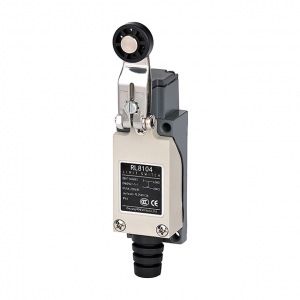Introduction

In fields such as industrial control, consumer electronics, and medical equipment, micro switches, with their compact size, play a crucial role in signal transmission and condition monitoring. However, under long-term high-load operation or the influence of harsh environments, micro switches may encounter various failure problems. Through Failure mode Analysis (FMEA) and targeted preventive measures, equipment reliability can be effectively enhanced and potential faults can be reduced.
Common failure modes: The big impact behind minor faults
The failure of micro switches often begins with "minor abnormalities". For instance, contact sticking is like a switch being "stuck". Once pressed, it cannot be disconnected normally, which may lead to continuous operation of the equipment or even loss of control. Poor contact is manifested as intermittent signals, such as no response when clicking the mouse or false triggering of device alarms. Reed fatigue fracture often occurs in frequent operation scenarios. For instance, after the paper jam detection switch of a printer operates for a long time, the metal reed may break due to elastic attenuation, leading to detection failure. The cracking of the casing and the jamming of the action are closely related to the environment. In a humid environment, the casing is corroded and thinned, or dust enters the interior of the switch and jams the mechanical structure, both of which can cause the switch to malfunction. These problems may seem minor, but they can cause equipment downtime, safety hazards or even accidents. Therefore, it is crucial to identify failure modes in advance.
Analysis of Failure Causes: A "Fault Chain" Interwoven with Multiple Factors
Failure is often the result of the superimposition of multiple factors. Overloading is a common cause. For instance, when a switch with a rated current of 1A is constantly exposed to a current of 1.5A, the arc erosion at the contact points intensifies, and surface oxidation leads to poor contact. When equipment is frequently started and stopped, the high temperature generated by the electric arc can "burn" the contacts, causing pits or adhesion. Environmental factors should not be underestimated either. The invasion of corrosive gases and particles in the dust environment of chemical workshops will accelerate the aging of the outer shell and internal parts. Mechanical shock and vibration may cause uneven force distribution on the reed, increasing the risk of fatigue fracture. Furthermore, improper design and selection is an "inherent defect". If the switch protection level is insufficient but it is used in a high-humidity environment, or if the load parameters do not match the actual working conditions, it will all plant the hidden danger of failure.
Preventive measures: Build a "protective net" throughout the entire chain
The industry has developed a mature prevention system for the causes of failure. Derating usage is the foundation. For instance, when choosing a switch with a contact current rating 1.5 times that of the actual load, a sufficient safety margin should be left. The design of the protection circuit can reduce the hazard of electric arcs. An RC buffer circuit is connected in parallel at both ends of the switch or a relay is connected in series to absorb surge current and extend the service life of the contacts. Environmental sealing is crucial. An IP67-level protective casing should be selected, and sealing rings should be used to block dust and moisture. In scenarios such as medical equipment, materials resistant to disinfection should also be considered. Structural reinforcement can enhance impact resistance. By optimizing the material of the reed (such as using stainless steel or alloy materials) and adding mechanical limit devices, stress damage caused by vibration can be reduced. Regular maintenance is the "acquired care". It involves formulating inspection plans, cleaning the oxide on the contact surface, lubricating moving parts, and promptly replacing aged switches to eliminate faults in their infancy.
Conclusion
From industrial automated production lines to household electronic devices, the reliable operation of micro switches is crucial to the stability of the entire system. By conducting failure mode analysis to identify "risk points" and then building a "protective wall" through measures such as derating design, environmental protection, and regular maintenance, not only can the equipment failure rate be reduced, but also the service life can be prolonged. In today's pursuit of efficient production and convenient life, paying attention to the "small details" of micro switches is the "great wisdom" to safeguard the safe operation of equipment.
Post time: Jul-03-2025






